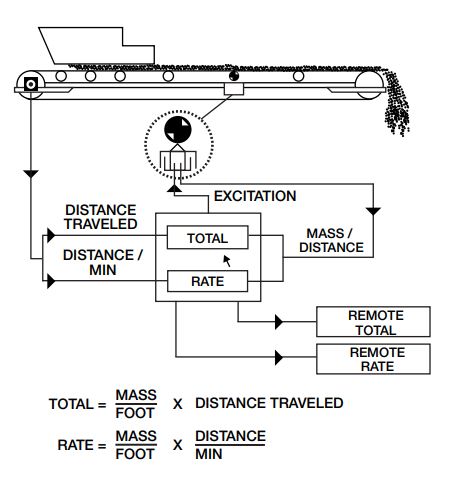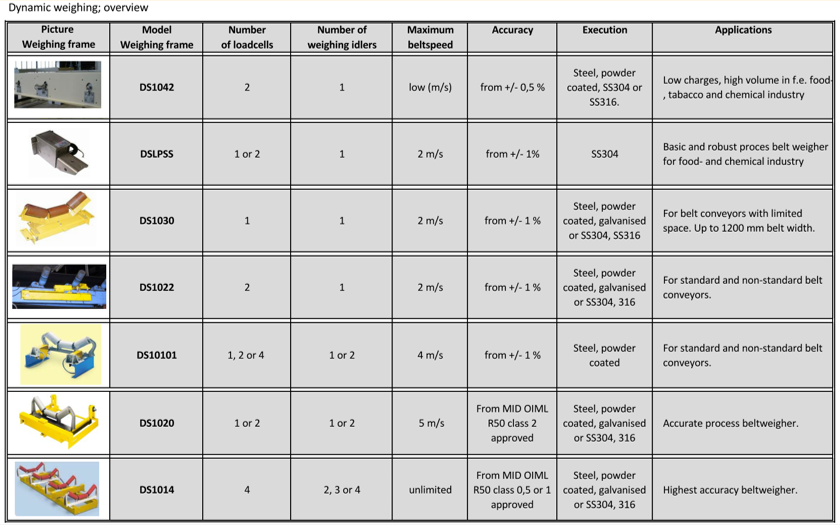How can we help you?
Welcome to our Frequently Asked Questions (FAQ) page. Here, we have compiled a list of the most common questions that our customers ask us about our products and services. Whether you’re a new customer or a long-time user, this page will provide you with the information you need to make the most of our offerings. If you don’t find the answer to your question here, please don’t hesitate to contact us. Our team is always ready to help you.
The intended purpose is a primary factor since this defines the required accuracy. We distinguish three types of application: fee, trade, or custody transfer, which typically require certified accuracy between 0.125 to 0.25%; process management or control, where +/- 0.25 to 0.5% is usually acceptable; and process monitoring, where +/- 3% may be all that’s required.
Other important considerations include the mass of material being handled and the speed of the belt. A heavy-duty belt scale is needed for higher throughput while a lighter duty model may be sufficient, and cheaper, if flow rates allow. Regarding belt speed, faster speeds are more demanding, with more idlers required to ensure an accurate reading, all other factors being equal.
Regardless of the accuracy capability of the scale design, it is unlikely that these devices will
perform as promised if simple maintenance procedures are not strictly adhered to. The following
are some recommended maintenance checks to ensure optimum performance of your belt
scale system.
- Scale Area – Debris Daily Clean scale area. Determine cause of debris and take steps to remedy
- Zero Cal Daily Perform Auto Zero. Accept and record any changes. If change is >0.25%, identify
cause and correct. - Idler roll condition Weekly Inspect idlers for wear / damage. Replace rolls or bearings as needed
- Span Cal Perform Weekly Auto SPAN simulated load tests. Check repeatability.
- Belt Scraper Weekly Check operation, adjust or replace blades if worn
- Belt Condition Monthly Visual inspection for cuts, tears or worn edges
- Speed Pulley Monthly Inspect for wear, material build-up, belt wrap. Check bearings
- Speed Sensor Monthly Inspect coupling for tightness, wobble and corrosion
1. The weight on the conveyor belt is 
measured by sensing the force on one
or more conveyor idlers via load cell(s).
2. The motion of the material is measured
using a speed sensor which produces
an “output” representing the speed of
belt travel.
3. Because the measured force represents
weight per unit length (i.e., kg/m or lbs/
ft), it can be multiplied by the belt travel
to acquire total weight. (Example:
kg/m x m = kg; lbs/ft x ft = lbs) This
function can be accomplished with
an electronic integrator.
A belt weigher, also known as a belt scale or weigh belt feeder, is a device used to measure the flow rate and total weight of materials transported on a conveyor belt. It works by continuously weighing the material on the moving conveyor belt and providing real-time weight data, which can be used for a variety of purposes such as process control, inventory management, and billing.
A typical belt weigher system consists of a load cell or multiple load cells, a speed sensor, and a controller. The load cells are typically installed underneath the conveyor belt, and they measure the weight of the material on the belt as it passes over them. The speed sensor measures the speed of the conveyor belt, which is used to calculate the flow rate of the material. The controller receives the weight and speed data from the load cells and speed sensor and calculates the total weight and flow rate of the material.
Beltweighers are commonly used in industries such as mining, cement, food processing, and agriculture to measure and control the flow of materials. They are known for their accuracy, reliability, and ability to operate in harsh environments.

